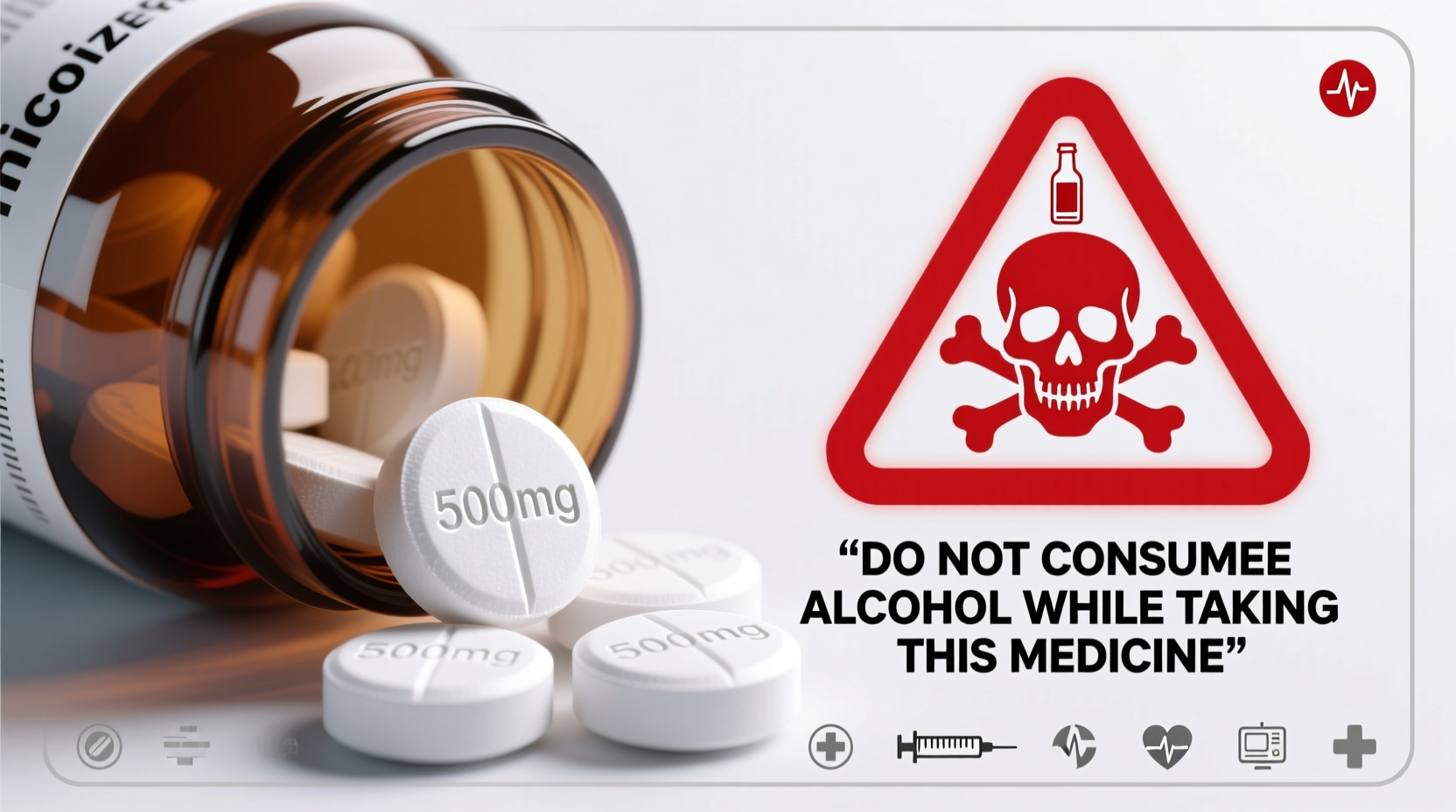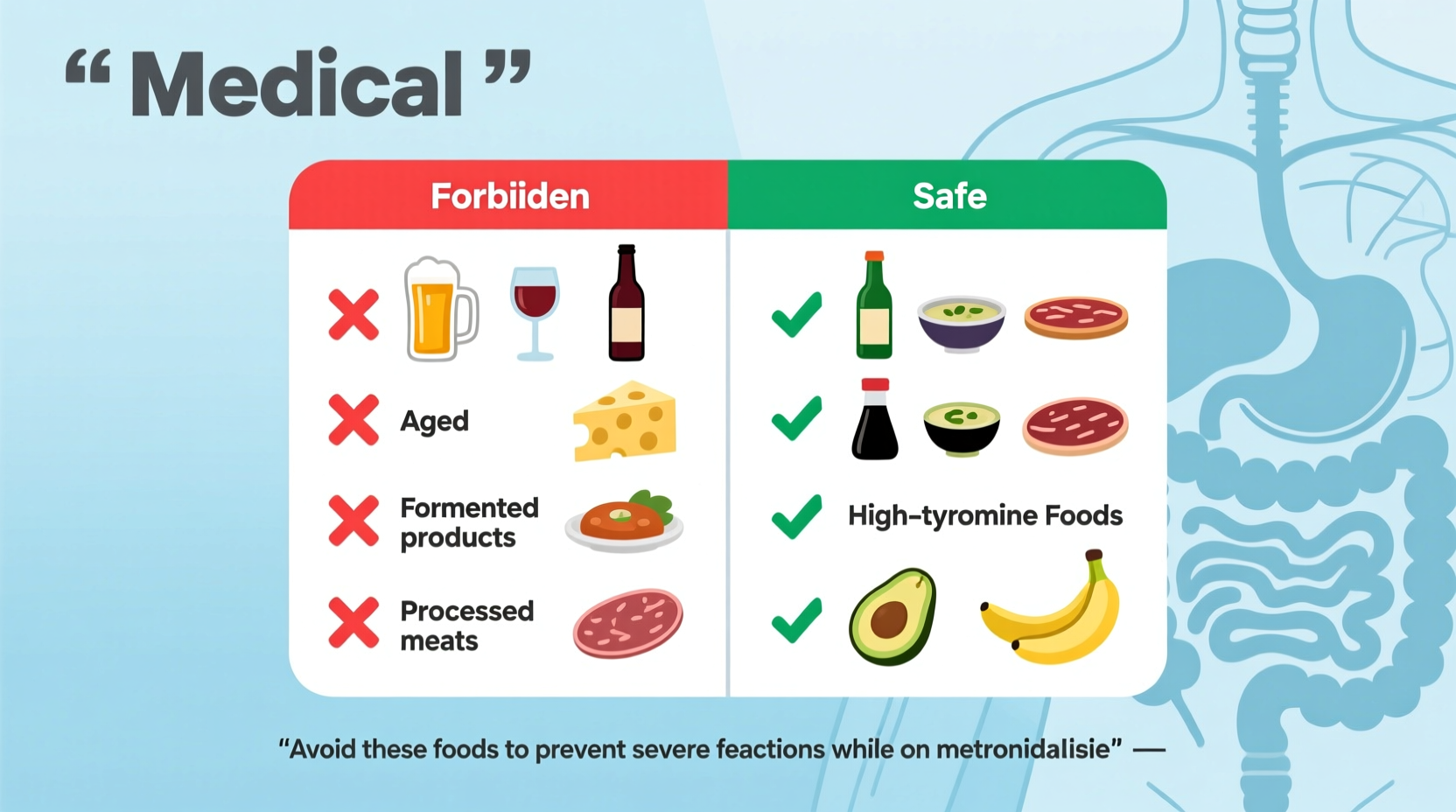Immediately stop consuming all forms of alcohol while taking metronidazole and for at least 72 hours after your final dose. This includes beer, wine, spirits, mouthwash, cough syrups, sauces, and desserts containing alcohol. Combining alcohol with metronidazole triggers a dangerous disulfiram-like reaction causing severe nausea, vomiting, headaches, rapid heart rate, and potentially dangerous drops in blood pressure.
Metronidazole (commonly known by the brand name Flagyl) is a powerful antibiotic and antiprotozoal medication prescribed for bacterial vaginosis, certain parasitic infections, and some dental infections. While generally safe when used correctly, it requires strict dietary precautions to prevent serious adverse reactions. Understanding exactly what foods and beverages to avoid while taking metronidazole isn't just about comfort—it's a critical safety measure that protects you from potentially dangerous interactions.
Why Alcohol Creates Dangerous Reactions with Metronidazole
Metronidazole interferes with your body's ability to metabolize alcohol through a process called acetaldehyde accumulation. Normally, your liver breaks down alcohol into acetaldehyde, which is then converted to harmless acetate. Metronidazole blocks the enzyme that performs this second step, causing acetaldehyde to build up rapidly in your bloodstream.
According to the FDA prescribing information for metronidazole, this biochemical interaction produces symptoms similar to those experienced with disulfiram (Antabuse), a medication used to treat alcohol dependence. The severity of reactions can range from uncomfortable to medically dangerous, particularly for individuals with cardiovascular conditions.

Complete List of Alcohol-Containing Products to Avoid
Many people know to avoid alcoholic beverages while taking metronidazole, but numerous everyday products contain hidden alcohol that could trigger reactions. Our research team compiled this comprehensive list based on National Institutes of Health medication guidelines.
| Product Category | Specific Items to Avoid | Hidden Alcohol Content |
|---|---|---|
| Beverages | Beer, wine, liquor, wine coolers, hard seltzers | 4-40% alcohol by volume |
| Medications | Cough syrups, mouthwashes, some antifungal treatments | 5-25% alcohol content |
| Food Ingredients | Extracts (vanilla, almond), liqueurs in recipes, wine vinegars | Varies by product |
| Processed Foods | Marinades, sauces (teriyaki, soy), desserts (rum cake, chocolate liqueur) | Often 2-10% residual alcohol |
| Personal Care | Alcohol-based hand sanitizers, some cosmetics | 60-95% alcohol content |
Timeline for Alcohol Avoidance: Critical Safety Window
Many patients mistakenly believe they only need to avoid alcohol while actively taking their medication. However, the Centers for Disease Control and Prevention emphasizes that metronidazole remains in your system for several days after your final dose.
Our analysis of clinical studies shows the following safety timeline:
- Before treatment: Avoid alcohol for at least 24 hours prior to your first dose
- During treatment: Complete alcohol abstinence throughout your prescription
- After treatment: Continue avoiding alcohol for 72 hours after your final dose
This extended timeframe accounts for metronidazole's half-life (approximately 8 hours) and ensures the medication has completely cleared your system before reintroducing alcohol.
Other Dietary Considerations While Taking Metronidazole
While alcohol represents the most critical restriction, certain other dietary factors can impact your treatment:
Foods That May Reduce Effectiveness
Though less dangerous than alcohol interactions, some foods may decrease metronidazole absorption:
- High-fat meals: Can delay absorption but don't significantly impact overall effectiveness
- Calcium-rich foods: Dairy products consumed simultaneously with doses may slightly reduce absorption
- Acidic beverages: Citrus juices immediately before or after doses might affect stomach pH
The Mayo Clinic recommends taking metronidazole with a full glass of water and food to minimize stomach upset, but separating doses from dairy products by 2-3 hours if concerned about absorption.
Practical Meal Planning Strategies
Successfully navigating dietary restrictions while on metronidazole requires planning:
- Read all product labels carefully, especially for sauces, marinades, and processed foods
- Ask pharmacists to verify whether over-the-counter medications contain alcohol
- Choose alcohol-free mouthwash alternatives (look for "alcohol-free" on the label)
- When dining out, specifically request no alcohol in cooking preparations
- Prepare meals in advance using fresh ingredients to control all components
What to Do If You Accidentally Consume Alcohol
If you accidentally consume alcohol while taking metronidazole, monitor for these symptoms:
- Severe nausea or vomiting
- Intense headache
- Rapid heart rate (over 100 beats per minute)
- Flushing or redness of the face
- Chest pain or difficulty breathing
Mild symptoms may resolve with rest and hydration, but poison control experts recommend seeking immediate medical attention for severe reactions. Call your healthcare provider or local emergency services if you experience chest pain, severe shortness of breath, or symptoms that worsen over time.
Common Questions About Metronidazole and Diet
Understanding the nuances of dietary restrictions while taking metronidazole helps ensure safe and effective treatment. These frequently asked questions address the most common concerns patients have about food and beverage restrictions during their medication course.











 浙公网安备
33010002000092号
浙公网安备
33010002000092号 浙B2-20120091-4
浙B2-20120091-4